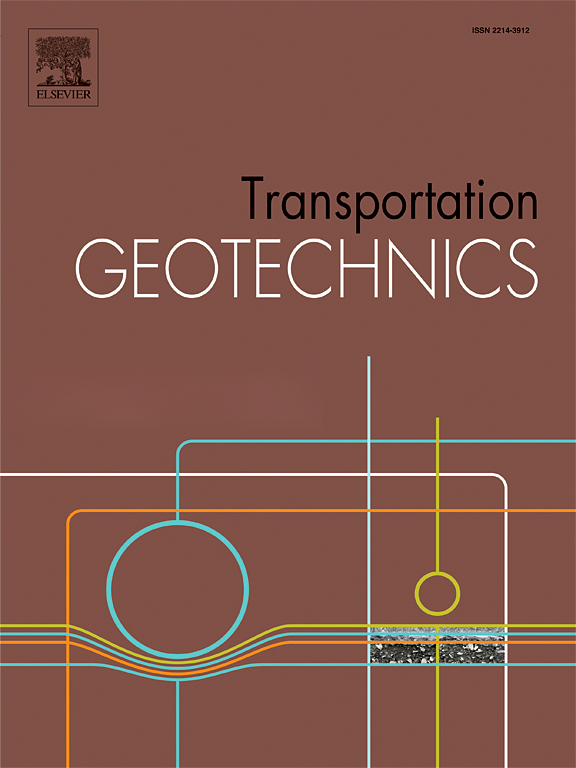干湿循环环境和振动事件对聚丙烯纤维增强粘土干燥裂纹和机械特性的耦合影响
IF 4.9
2区 工程技术
Q1 ENGINEERING, CIVIL
引用次数: 0
摘要
本文章由计算机程序翻译,如有差异,请以英文原文为准。
Coupled effect of cyclic wet-dry environment and vibration event on desiccation crack and mechanical characteristics of polypropylene fiber-reinforced clay
This study investigates the role of polypropylene fibers (PFs) in mitigating the combined effects of wet-dry (W-D) cycles and vibration event (VE), such as earthquake or machine vibrations, on the desiccation cracking and mechanical behavior of clay through model tests. A comprehensive experimental program was conducted using compacted clayey soil specimens, treated with various PF percentages (i.e., 0.2 %, 0.4 %, 0.6 %, and 0.8 %) and untreated (i.e., 0 % PF). These specimens were subjected to multiple W-D cycles, with their behavior documented through cinematography. Desiccation cracking and mechanical responses were evaluated after each W-D cycle and subsequent VE. Results indicated that surface cracking, quantified by morphology and crack parameters i.e., crack surface ratio (Rsc), total crack length (Ltc), and crack line density (Dcl), increased with progressive W-D cycles. Higher PF content in soil significantly reduced desiccation cracking across all W-D phases, attributable to the enhanced tensile strength and stress mitigation provided by the fibers. Following VE, surface crack and fragmentation visibility decreased due to the shaking effects, as indicated by reductions in Rsc and Dcl. However, Ltc increased slightly, suggesting either crack persistence or lengthening. Higher PF content resulted in a more substantial reduction in Rsc and Dcl and a reduced increase in Ltc after VE. W-D cycles led to increased cone index (CI) values, reflecting enhanced compactness due to shrinkage which enhances with PF content showing improved soil resistance to loading. Meanwhile, VE reduced CI values following W-D cycles, particularly in near-surface layers, PF content mitigates this reduction, demonstrating that PF contributes to a more stable soil matrix. Also, PF content decreased the soil deformation under W-D cycles and subsequent VE.
求助全文
通过发布文献求助,成功后即可免费获取论文全文。
去求助
来源期刊

Transportation Geotechnics
Social Sciences-Transportation
CiteScore
8.10
自引率
11.30%
发文量
194
审稿时长
51 days
期刊介绍:
Transportation Geotechnics is a journal dedicated to publishing high-quality, theoretical, and applied papers that cover all facets of geotechnics for transportation infrastructure such as roads, highways, railways, underground railways, airfields, and waterways. The journal places a special emphasis on case studies that present original work relevant to the sustainable construction of transportation infrastructure. The scope of topics it addresses includes the geotechnical properties of geomaterials for sustainable and rational design and construction, the behavior of compacted and stabilized geomaterials, the use of geosynthetics and reinforcement in constructed layers and interlayers, ground improvement and slope stability for transportation infrastructures, compaction technology and management, maintenance technology, the impact of climate, embankments for highways and high-speed trains, transition zones, dredging, underwater geotechnics for infrastructure purposes, and the modeling of multi-layered structures and supporting ground under dynamic and repeated loads.
 求助内容:
求助内容: 应助结果提醒方式:
应助结果提醒方式:


